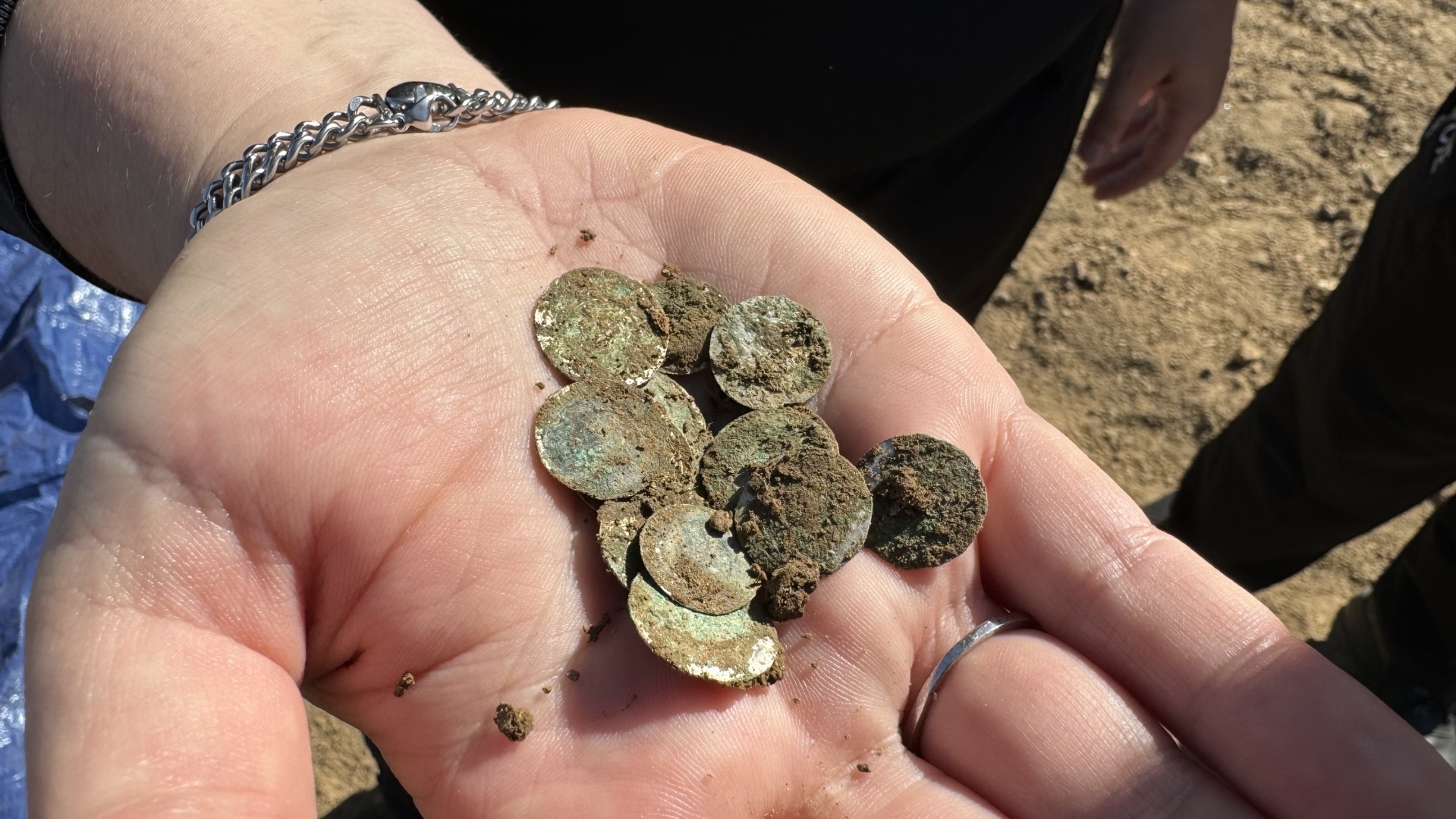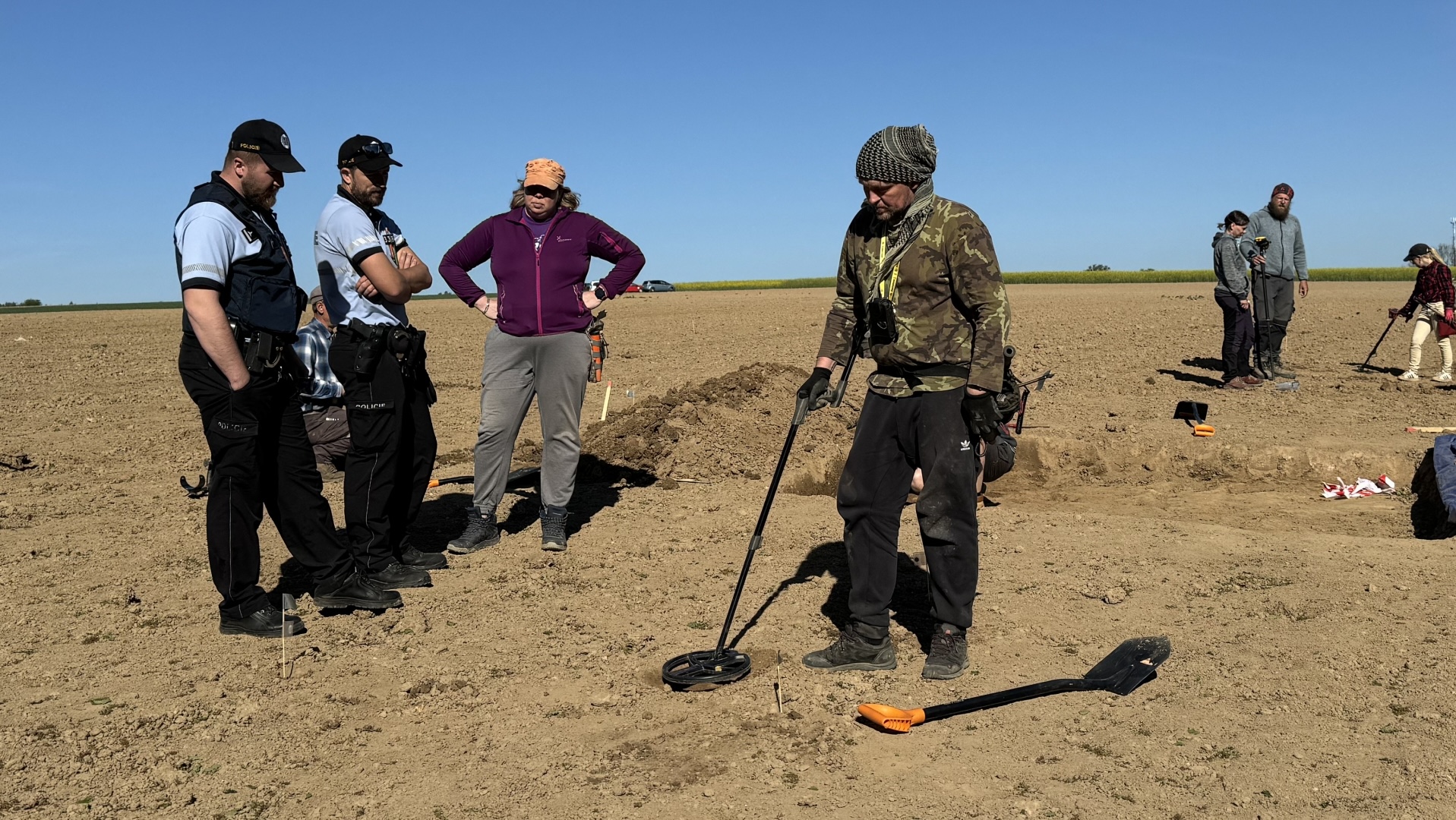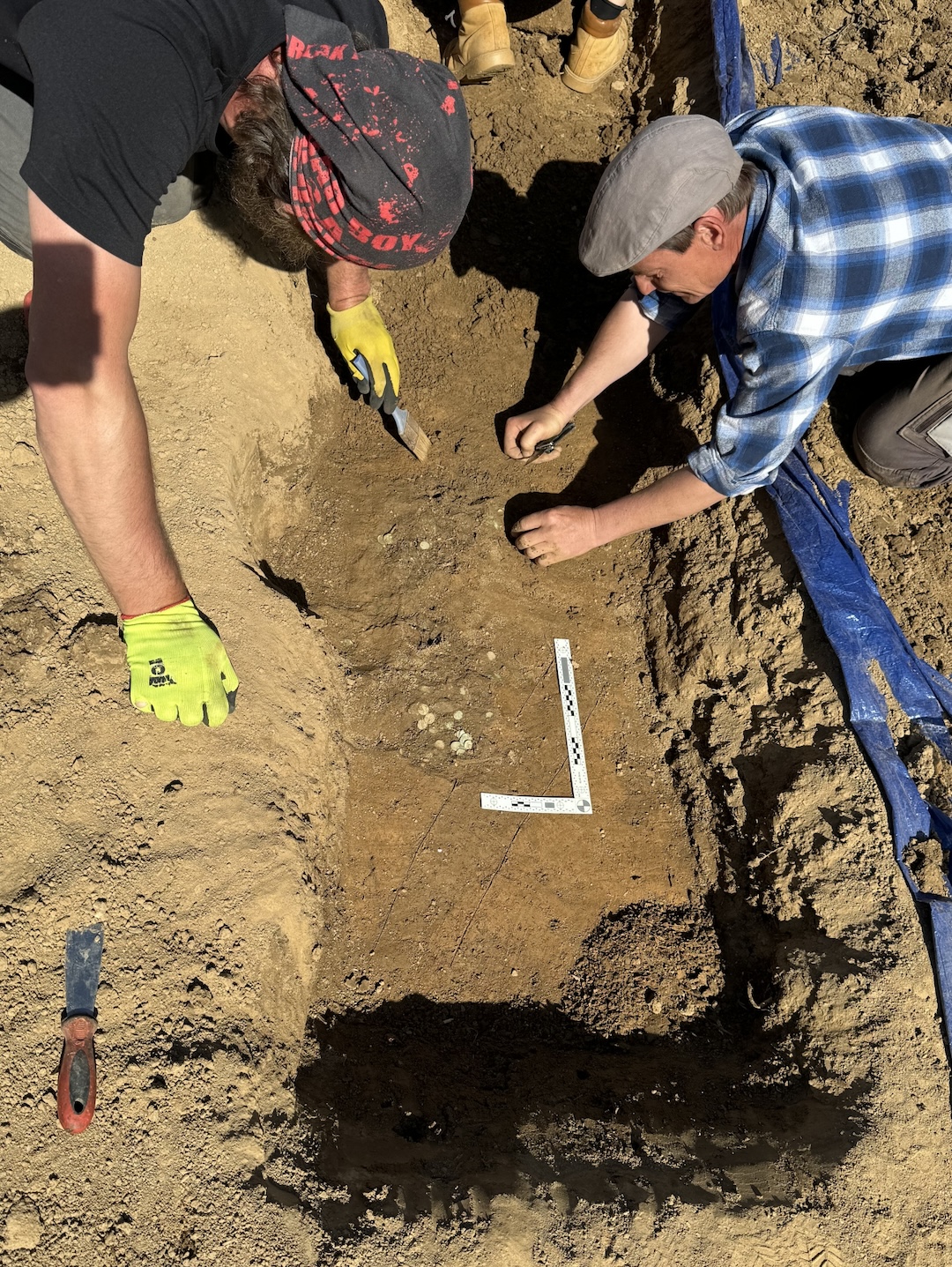
A woman who was hiking in the Czech Republic discovered a "jackpot": a hoard of more than 2,000 medieval silver coins that experts describe as one of the greatest finds of the past decade.
The coins were discovered near the town of Kutná Hora, about 35 miles (60 kilometers) east of Prague. They were originally buried in a pottery jar, but only the bottom has survived plowing, according to a translated statement from the Institute of Archaeology of the Czech Academy of Sciences.
The coins are medieval denarii — medieval versions of the denarius, the standard silver coin minted during the Roman Empire.
Lenka Mazačová, director of the Czech Museum of Silver in Kutná Hora, said in the statement that the coins were probably made at a mint in Prague, from silver that had been imported into the region, then known as Bohemia.
The medieval silver coins also contain small amounts of copper, lead and other metals, and experts hope they can use the coins' composition to determine the origin of the silver.
Related: Bronze Age gold belt with 'cosmological' designs unearthed in Czech beet field
Political unrest
Archaeologists think the coins may have been hidden during a time of crisis.
"It [the hoard] was probably placed during the first quarter of the 12th century, at a time of internal political instability," Filip Velímský, an archaeologist with the Institute of Archaeology, said in the statement. "At that time, there were disputes in the country between members of the Přemyslid dynasty over the princely throne in Prague."

The new find consists of more than 2,150 silver coins minted during the reigns of three Přemyslid rulers: King Vratislav II, who ruled Bohemia from 1085 until his death in 1092; his son Prince Břetislav II, who succeeded him and ruled until his death in 1100; and Prince Bořivoj II, who succeeded his half brother Břetislav and ruled until 1120.
Experts cannot be sure how much the hoard was worth at the time it was hidden — probably by burying it — but they agreed that it must have been a vast amount.
"Unfortunately, for the turn of the 11th and 12th centuries, we lack data on the purchasing power of contemporary coins," Velímský said. "But it was a huge, unimaginable and at the same time unaffordable amount for an ordinary person. It can be compared to winning a million in the jackpot."


The frequent battles for the throne in Prague at the time meant rival armies often marched through Kutná Hora, and the experts have not ruled out the possibility that the coins were meant for the payment of soldiers' salaries or were the spoils of war.
The coins will now be examined at the Czech Museum of Silver in Kutná Hora, which was the site of several early silver mines and a center of silver production in medieval times.
Mazačová said the coins will be cleaned, photographed and assessed for possible restoration. They will also undergo X-ray and spectral analysis in an attempt to determine their material composition and will be exhibited at the museum in 2025, he said.







